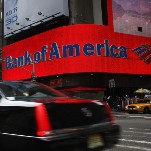Remember When Lindsay Lohan Was Nominated For a VMA?
EntertainmentThat year, Lohan was basking in the release of her well-selling debut album, Speak, which hit number four on the Billboard charts. It was the same year of her best-recognized role, as Cady Heron in Mean Girls. But despite being crowned a golden girl, it clearly wasn’t all champagne and roses and 1 p.m. wake-up calls at the Chateau Marmont for Lindsay—at least not yet (her first arrest occurred in 2007). No, Lindsay was simply bothered by the fame, the way the paparazzi stalked her, waiting to catch her doing something silly or ill-considered so that they could hold up her image like a mirror to the wayward and sullied youth of our amoral nation. 2005 was the George W. Bush presidency; we needed true facts to prove to our country’s leadership that America was going to hell in a handbasket. Lindsay Lohan provided the proof.
-

-

-

-

-

-

-

-

-

-

-

-

-

-

-

-

-

-

-

-

-

-

-

-

-

-

-

-

-

-

-

-

-

-

-

-

-

-

-

-








































